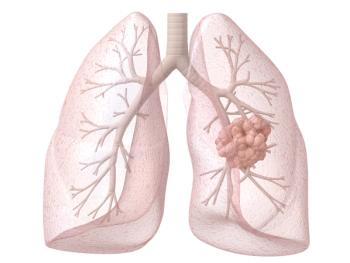
- Oncology Vol 28 No 1S
- Volume 28
- Issue 1S
(P154) Variation in Severity of Acute Skin Toxicity by Race and Ethnicity in a Prospective Cohort of Patients Receiving Postmastectomy Radiation
Risk factors for radiation-induced skin toxicity (ST) are poorly understood, and there are limited data examining the relationship between race/ethnicity and the development of ST. We evaluated risk factors for radiation-induced ST in a racially and ethnically diverse cohort of patients receiving postmastectomy radiation therapy (PMRT) for breast cancer.
Jean L. Wright, MD, Cristiane Takita, MD, Isildinha Reis, PhD, Wei Zhao, MS, MD, E. Lee, MS, J.J. Hu, PhD; University of Miami Miller School of Medicine
Purpose and Objectives: Risk factors for radiation-induced skin toxicity (ST) are poorly understood, and there are limited data examining the relationship between race/ethnicity and the development of ST. We evaluated risk factors for radiation-induced ST in a racially and ethnically diverse cohort of patients receiving postmastectomy radiation therapy (PMRT) for breast cancer.
Materials and Methods: We evaluated the first 108 patients in an ongoing prospective study assessing radiation-induced ST in patients receiving PMRT. We assessed ST using a variation of the National Cancer Institute (NCI) Common Terminology Criteria for Adverse Events version 3.0 (CTCAE v3.0), which divides skin reaction into six categories in order to capture the presence of dry and moist desquamation as follows: 1- faint or dull erythema and/or follicular reaction and/or itching (CTCAE grade 1); 2- bright erythema and/or tender to touch (CTCAE grade 2); 3- dry desquamation with or without erythema (CTCAE grade 2); 4- small or moderate amount of wet desquamation (CTCAE grade 2); 5- confluent moist desquamation and/or edema (CTCAE grade 3); and 6- ulceration, hemorrhage, and/or necrosis (CTCAE grade 4). ST was evaluated at Week 3 of RT and RT completion. We recorded patient demographics, smoking history, body mass index (BMI), and disease and treatment characteristics. We used Pearson’s chi-square test or Fisher’s exact test for differences in the distributions of patient and disease characteristics and ST grade.
Results: Overall, 5.6% self-identified as non-Hispanic white, 68.2% Hispanic white, 24.2% black, and 2% other. Further, 20.8% was premenopausal; 28% had BMI < 25, 37.4% 25–29.9, and 34.6% ≥ 30. In addition, 65.4% of patients were never-smokers, and 34.6% of subjects were current/former smokers. Disease stage was 4.7% stage I, 26.1% stage II, 66.3% stage III, and 1.9% stage IV. Also, 67.3% had estrogen receptor (ER)+ tumors, 25% were human epidermal growth factor receptor 2 (HER2)+, and 20.8% had triple-negative disease. All had mastectomy +/− reconstruction and axillary dissection or sentinel node biopsy. Further, 91.5% received systemic chemotherapy, and 67.3% received endocrine therapy. Median chest wall dose was 50 Gy vs 60 Gy for mastectomy scar, using photon tangents alone or matched to a medial electron field. Of all patients, 93.9% were treated with bolus throughout treatment, most commonly 0.5 cm daily. Dosimetric analysis showed that the mean chest wall volume receiving > 105% of prescription dose was 29.1%, and 2.5% received > 110%. Overall at RT completion, 15.9% developed grade 1 ST, 9.3% grade 2, 20.6% grade 3, 47.7% grade 4, and 6.5% grade 5. There were no significant differences in patient, disease, or treatment characteristics by race or ethnicity, including BMI. Grade 4–5 ST (moist desquamation) was more common in black patients than nonblack patients (73.1% vs 48.1%; P = .026) and in those with PR-positive tumors (64.2% vs 43.1%; P = .031). Those with BMI ≥ 25 exhibited a trend toward grade 4–5 ST (59.7 vs 40; P = .066). No other factors significantly associated with ST.
Conclusion: In a racially and ethnically diverse prospectively studied cohort of breast cancer patients receiving PMRT, black race was a significant predictor of moist desquamation. CTCAE grading alone would not capture this difference; improved scales with sensitive criteria for grading radiation-induced ST in breast cancer are needed. Our ongoing study with a targeted sample size of 240 may shed light on the mechanisms of racial/ethnic disparities in radiation-induced ST.
Articles in this issue
Newsletter
Stay up to date on recent advances in the multidisciplinary approach to cancer.



















































































